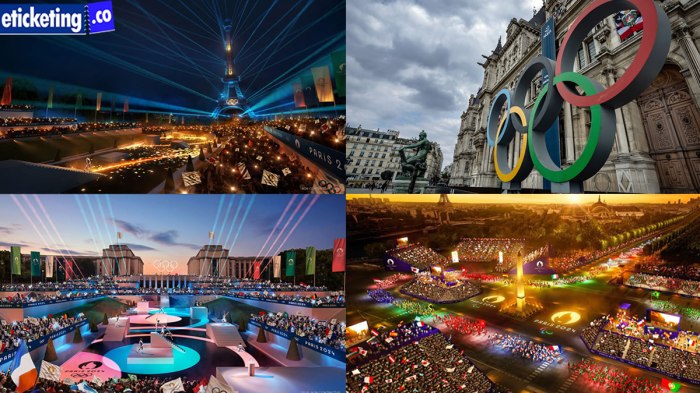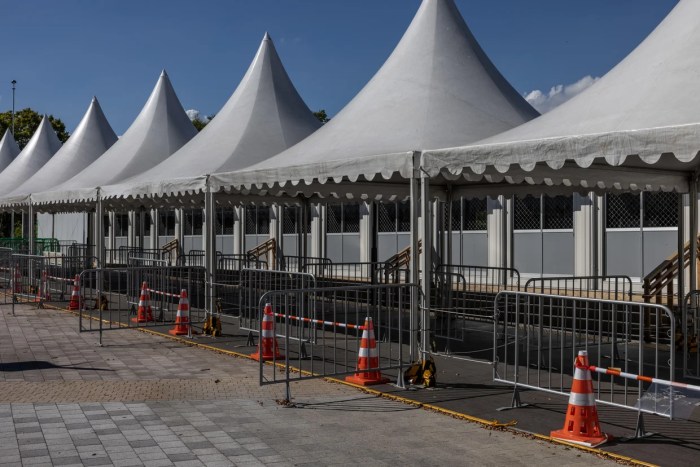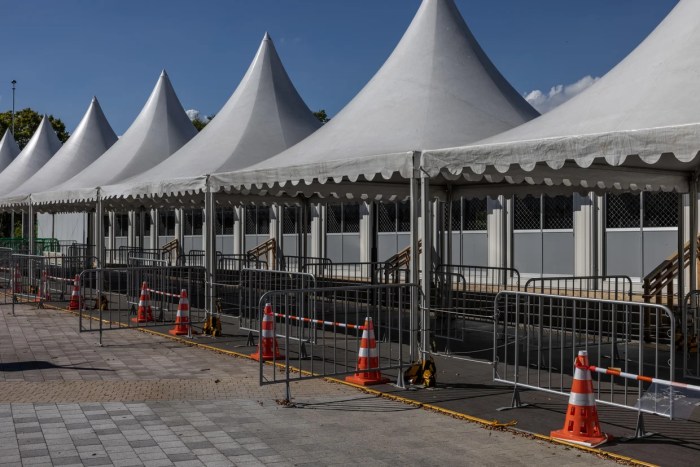Olympic venues you can visit offer a unique opportunity to step back in time and experience the spirit of the Games. From iconic stadiums to hidden swimming pools, these locations tell stories of athletic achievement and architectural innovation. This guide dives deep into the history, types, and practicalities of visiting these fascinating places, ensuring you get the most out of your experience.
We’ll explore everything from the evolution of stadium designs across different eras to the logistical considerations for visiting these venues. You’ll discover how to plan your visit, find hidden gems, and truly appreciate the legacy of the Olympics. Get ready to be inspired!
Introduction to Olympic Venues
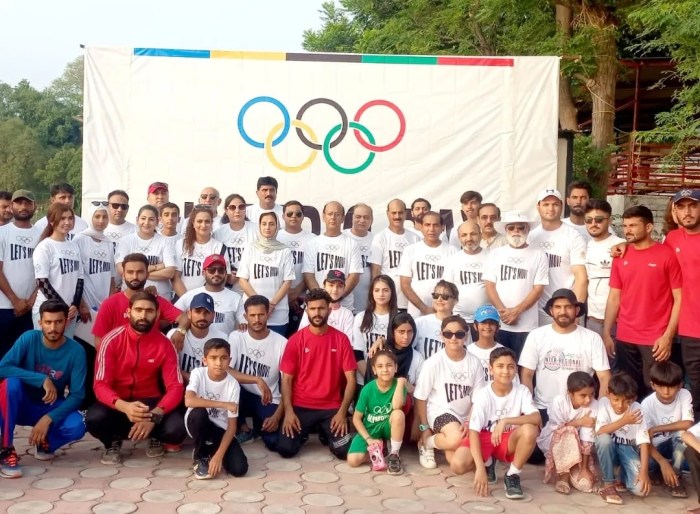
Olympic venues are more than just structures; they are powerful symbols of human achievement, technological advancement, and cultural exchange. From the ancient Greek amphitheaters to the modern-day marvels of engineering, these sites have witnessed and shaped the evolution of the Olympic Games. They are testaments to the enduring spirit of competition and the transformative power of sport.The design and construction of Olympic venues have evolved significantly throughout history, reflecting the changing social, technological, and political landscapes of the times.
This evolution mirrors the growth of the Games themselves, becoming ever more impressive displays of architectural ingenuity and global cooperation.
History of Olympic Venues
The Olympic Games, with their roots in ancient Greece, initially utilized existing structures like stadiums and amphitheaters. Early venues were often temporary structures adapted for specific events, reflecting the simpler nature of the games. The modern Olympic Games, revived in 1896, saw a shift towards permanent structures, although designs remained comparatively modest. This marked a significant departure from the temporary nature of the ancient games.
Iconic Venues and Architectural Significance
Many Olympic venues have become iconic landmarks, reflecting the architectural styles of their respective eras. The iconic venues are not just about the sporting events, but also about the broader cultural and historical context in which they were built. For example, the 1932 Los Angeles Coliseum, a testament to the Art Deco style, stands as a symbol of American engineering prowess.
Similarly, the 1972 Munich Olympic Stadium, with its striking design and use of innovative materials, exemplifies the avant-garde architecture of the era. These examples showcase how architecture can not only serve as a functional backdrop but also as a lasting artistic expression.
Evolution of Olympic Stadium Designs
The evolution of Olympic stadium designs has been closely linked to advancements in technology and architectural understanding. Early stadiums relied on simple, often temporary, structures. Later stadiums incorporated more complex designs, with the use of concrete, steel, and other materials. This progression can be clearly seen in the shift from the straightforward layouts of early venues to the more intricate designs of contemporary stadiums.
Impact of Technology on Olympic Venue Construction
Technological advancements have dramatically influenced Olympic venue construction. The use of innovative materials, prefabrication techniques, and sustainable building practices have transformed the possibilities for stadium design. Modern venues often utilize advanced structural systems, sophisticated energy-efficient technologies, and smart materials to optimize functionality and minimize environmental impact. For example, the use of recycled materials in some modern stadiums reflects a growing emphasis on sustainability in construction projects.
Criteria for Selecting Olympic Venues
The selection of Olympic venues is a complex process, involving a range of considerations. Factors such as accessibility, infrastructure, and the potential for future use play a crucial role in the decision-making process. Also important are considerations of community impact, economic benefits, and the capacity to host the diverse range of events associated with the Games. The location must be suitable for both the athletes and the spectators, balancing logistical requirements with the needs of the host city and surrounding communities.
Exploring Olympic venues is a fantastic way to soak up history and the thrill of the games. Imagine stepping onto the very track where Usain Bolt blazed to victory, or marveling at the architecture of the iconic stadiums. Beyond that, if you’re a foodie, consider a trip to a top-tier sushi restaurant like those boasting Michelin stars – sushi restaurant michelin stars offer an unparalleled culinary experience.
It’s a great way to combine your passion for sports and food while you’re visiting these remarkable Olympic sites.
Furthermore, the capacity to accommodate the influx of visitors and volunteers is a key element in the evaluation process.
Types of Olympic Venues
The Olympic Games showcase a breathtaking array of athletic competitions, each demanding unique and specialized venues. From the roar of a packed stadium to the rhythmic splash of a swimming pool, these venues are meticulously designed to provide athletes with optimal conditions for competition and spectators with immersive experiences. This exploration delves into the diverse types of Olympic venues, highlighting their specific features, functions, and constructional differences.The design and construction of Olympic venues are profoundly influenced by the specific sports being hosted.
Factors like the required space, the nature of the competition, and safety protocols are paramount considerations. The logistical requirements, from spectator capacity to athlete access and support services, further shape the overall design. Understanding these variations reveals the meticulous planning that goes into creating world-class sporting facilities.
Stadiums
Stadiums, the iconic heart of the Olympic Games, are designed for large-scale events. They house track and field competitions, opening and closing ceremonies, and other major events. These venues are typically massive structures, capable of accommodating tens of thousands of spectators. Key features often include a running track, field events areas, and seating for a large audience.
Construction often involves advanced engineering to ensure structural integrity and safety during high-impact events. The design emphasizes spectator visibility and acoustics for a vibrant atmosphere. Examples include the iconic Olympic Stadiums in various Olympic cities, showcasing the architectural and engineering marvels of the era.
Swimming Pools
Olympic swimming pools are highly specialized venues. They need precise dimensions, water quality, and temperature control. Construction involves intricate water filtration systems and precise temperature regulation. Competitions require a well-defined pool area and a highly controlled environment to ensure fair and safe conditions for the swimmers. These venues also often feature spectator areas and support facilities for the athletes.
Variations in pool dimensions, including length and lanes, are evident across different Olympic Games.
Arenas
Arenas, designed for indoor sports, are integral to the Olympic experience. These venues can host a range of sports, including basketball, volleyball, and gymnastics. The construction of arenas emphasizes the need for a controlled environment. Key features include specialized courts, elevated seating, and robust infrastructure to support the specific requirements of the featured sports. The design must ensure efficient movement of athletes and spectators, while also maintaining a safe and stimulating atmosphere for competition.
Visiting Olympic venues is a blast, especially if you’re traveling with kids! Barcelona, with its rich Olympic history, offers a fantastic opportunity to explore these iconic sites. If you’re looking for fun, free activities while you’re there, check out this list of free things to do in Barcelona with kids. From parks to museums, there’s plenty to keep everyone entertained.
And, of course, there are plenty of Olympic venues to see and appreciate after your free time activities.
The arenas are also meticulously designed to provide optimal acoustics and visibility for spectators.
Other Venues
Beyond these prominent venues, the Olympic Games utilize a multitude of other venues. These include dedicated facilities for sports like hockey, tennis, and various other disciplines. These venues are designed with particular features for each sport. For example, tennis courts require precise surface materials and dimensions. The logistical requirements for these specialized venues vary significantly depending on the sport.
Comparative Analysis of Venues
| Venue Type | Key Features | Constructional Considerations | Logistical Requirements |
|---|---|---|---|
| Stadiums | Large seating capacity, running tracks, field areas | Structural integrity, spectator safety, acoustics | Large-scale crowd management, security, logistics |
| Swimming Pools | Precise dimensions, water filtration, temperature control | Waterproofing, plumbing, filtration systems | Athlete support, water quality control, safety |
| Arenas | Specialized courts, elevated seating, controlled environment | Structural support, acoustics, spectator flow | Athlete access, spectator movement, equipment storage |
| Other Venues | Specific to individual sports (e.g., hockey rinks, tennis courts) | Specific to the sport’s requirements | Equipment storage, officiating, player preparation |
Visiting Olympic Venues
Experiencing the legacy of the Olympic Games often involves visiting the iconic venues where history was made. These venues, from stadiums to arenas, offer a unique opportunity to step back in time and appreciate the spirit of competition and athletic achievement. Learning about the process of visiting these historical sites is key to making the most of your trip.
Various methods exist for exploring former Olympic venues, ranging from organized tours to independent exploration. Understanding the different options available allows you to tailor your visit to your preferences and interests. Many venues offer guided tours that provide insightful commentary, while others allow public access for self-guided exploration. This flexibility ensures a diverse range of experiences for every visitor.
Methods of Accessing Olympic Venues
Access to former Olympic venues can be achieved through several channels. These channels include guided tours, public access, and special events. Each option offers a distinct approach to immersing yourself in the venue’s history and atmosphere.
- Guided Tours: Many venues provide guided tours that offer in-depth knowledge of the venue’s history, construction, and significance in the Olympic movement. These tours are led by knowledgeable guides who can share anecdotes and provide context to the various features. Guided tours often provide a deeper understanding of the venue’s role in the Olympic Games.
- Public Access: Some venues offer public access, allowing visitors to explore the facilities independently. This option is particularly appealing for those who prefer a self-paced exploration and want to spend more time at specific areas or features. These venues may also offer self-guided walking tours or downloadable audio guides.
- Special Events: Venues may host special events, such as exhibitions, concerts, or community gatherings. These events offer unique ways to interact with the venue and experience its current use. The schedules for these events vary and can be a good option for those seeking a more active experience.
Examples of Publicly Accessible Venues
Several former Olympic venues are open to the public, providing opportunities to experience the history firsthand. These venues vary in their size, function, and the type of access they provide.
| Venue | Access Type | Opening Hours | Admission Fee | Additional Information |
|---|---|---|---|---|
| Olympic Stadium (Berlin) | Public Access (Tours available) | Check website for schedule | Variable, depending on activity | Offers tours of the stadium and surrounding areas. |
| Olympic Park (London) | Public Access (Various activities) | Variable, check venue’s schedule | Variable, depending on activity | Offers various activities, from park walks to events. |
| Olympic Park (Barcelona) | Public Access (Specific zones) | Check website for schedule | Variable, depending on activity | Specific zones are open for public access, with varying hours. |
Planning Your Visit
Before visiting an Olympic venue, thorough planning is essential. This includes researching the venue’s opening hours, admission fees, and available access options. Ensuring that you have all the necessary information will streamline your visit.
- Website Research: Official websites of the venues provide detailed information about opening hours, admission fees, and tour schedules. This information is crucial for planning your visit effectively.
- Contact Information: Contacting the venue’s management or tourist information centers can provide up-to-date details and answer specific questions. This ensures accurate information about your planned visit.
Olympic Venue Experiences
Stepping into an Olympic venue is more than just a visit; it’s a journey through history, a palpable echo of athletic triumph, and a glimpse into the future of sports. These venues aren’t just structures; they’re living testaments to the human spirit’s capacity for excellence and the power of shared dreams. The atmosphere, the history, and the very energy of these places resonate with visitors long after they leave.
Historical Significance of Visiting Olympic Venues
Olympic venues are more than just places where events take place. They are tangible links to the past, embodying the spirit of the Games throughout their history. Visiting these venues allows visitors to connect with the legacy of athletes, organizers, and spectators who have shaped the Olympic movement. They offer a unique opportunity to understand the evolution of the games and witness the architectural marvels that have served as backdrops to athletic glory.
For example, the iconic Olympic Stadium in Berlin, Germany, stands as a powerful reminder of the 1936 Games, a time of both triumph and tragedy in the world.
Atmosphere and Feelings Associated with Visiting Olympic Venues
The atmosphere within an Olympic venue is often electric. The sheer scale of the stadiums, the palpable excitement of crowds, and the palpable sense of history all contribute to a unique emotional experience. Visitors frequently report feeling a profound sense of awe, inspiration, and even a connection to the athletes who have graced these hallowed grounds. The echoing sounds of past events and the anticipation for future competitions combine to create a truly unforgettable atmosphere.
Ever wanted to step into the magic of the Olympics? Many Olympic venues are open to the public for tours, offering a unique glimpse into the spirit of competition. Check out the stunning transformations at the Disney Store in Times Square for the holiday season – a truly captivating display, as seen in this first look at the disney store times square holiday transformation first look.
Visiting these venues can be a fantastic way to experience the Olympic legacy, and a great day out!
The roar of the crowd, the sense of community, and the thrill of witnessing world-class athleticism combine to make an unforgettable experience.
Inspiration Derived from Visiting Olympic Venues
Olympic venues hold a powerful capacity to inspire. Seeing the scale of the facilities and the dedication of the athletes often sparks a desire for personal achievement and self-improvement. The stories of past champions and the dedication of the teams often leave visitors with a feeling of motivation and a renewed sense of purpose. The very essence of athletic pursuit and the pursuit of excellence often motivates visitors.
Impact on Tourists Visiting Olympic Venues
The impact of visiting Olympic venues on tourists extends beyond the immediate experience. The venues often serve as a catalyst for further exploration of the host city, prompting tourists to delve deeper into the local culture and history. This deeper engagement with the city, often in conjunction with other attractions, leaves lasting positive memories and fosters a greater appreciation for sports and human achievement.
The emotional impact often transcends the immediate experience, encouraging a broader appreciation for the host city’s cultural heritage.
Comparison of Olympic Venue Experiences
| Venue | Historical Significance | Atmosphere | Inspirational Impact | Overall Tourist Impact |
|---|---|---|---|---|
| Olympic Stadium (Berlin) | Witness to a pivotal moment in history; symbol of both triumph and tragedy. | Electric, awe-inspiring, echoes of past events. | Motivates visitors with stories of past champions. | Encourages exploration of the host city’s rich past. |
| Olympic Park (London) | Modern marvel, showcases the spirit of unity and global cooperation. | Energetic, vibrant, sense of community and celebration. | Sparks a desire for personal excellence and self-improvement. | Prompts deeper exploration of the city’s contemporary culture. |
| Olympic Stadium (Tokyo) | Iconic structure; embodies the futuristic spirit of Japan. | Intense, focused, a unique blend of tradition and modernity. | Leaves visitors with a renewed sense of purpose. | Encourages a deeper understanding of the host city’s values. |
Venue Preservation and Future Use: Olympic Venues You Can Visit
Olympic venues, iconic symbols of sporting achievement, often face a unique challenge after the games conclude. Their temporary nature necessitates careful planning for preservation and repurposing to ensure a lasting legacy beyond the competition. The future use of these venues is not just about finding a new function, but also about respecting their history and the memories they hold.
Preservation and repurposing strategies vary significantly depending on the venue’s design, location, and the host city’s priorities.These venues, often built with significant investment, need to transition into new, sustainable roles. Successful transitions depend on thoughtful planning, community engagement, and a clear vision for their continued use. The goal is not simply to fill space, but to integrate the venue into the fabric of the host city, enriching its cultural and economic landscape.
This often involves balancing the need for economic viability with the historical and cultural significance of the site.
Strategies for Venue Preservation
Successful preservation strategies prioritize the structural integrity of the venue while adapting it to new functions. This often involves meticulous maintenance, incorporating modern building standards, and ensuring accessibility for all users. A comprehensive preservation plan must address potential environmental impacts and incorporate sustainability considerations into the repurposing process. Proper preservation allows for future generations to experience and learn from the legacy of the Games.
Methods of Venue Repurposing
Repurposing former Olympic venues encompasses a wide range of possibilities, from transforming stadiums into entertainment complexes to converting arenas into community centers. The most effective repurposing strategies consider the venue’s unique characteristics, the needs of the community, and the long-term economic viability of the project. This requires careful consideration of the potential impact on local communities, both positive and negative, and finding ways to create a balance.
Examples of Repurposed Olympic Venues
- Olympic Stadium, Berlin (1936): This stadium, originally built for the 1936 Summer Olympics, underwent significant renovations after the games. Today, it serves as a major sports and entertainment venue, hosting numerous events and performances. Its transformation exemplifies the adaptability of iconic structures to changing needs.
- The Aquatics Centre, London (2012): The London 2012 Aquatics Centre, a state-of-the-art facility, was designed for swimming and diving competitions. After the games, it was repurposed into a community center, accessible to the public for various activities, demonstrating a focus on community engagement and accessibility. This is an excellent example of adapting a specialized facility to broader community use.
- The National Stadium, Beijing (2008): This iconic stadium, designed for the 2008 Summer Olympics, now hosts various events, including concerts and major sporting competitions. Its preservation as a prominent venue underscores the lasting impact of the Games. This illustrates how a large-scale venue can maintain its status as a major event space even after the Olympics.
Repurposing Considerations
A table summarizing examples of repurposed venues and their new uses provides a concise overview of successful transformations:
| Original Venue | Original Use | Repurposed Use |
|---|---|---|
| Olympic Stadium, Montreal (1976) | Athletics | Multi-purpose sports complex, concerts, and community events |
| Olympic Park, Los Angeles (1984) | Various sports and events | Public park, sports facilities, and community gardens |
| Olympic Stadium, Seoul (1988) | Athletics | Concert venue and multi-purpose sports arena |
Images of Olympic Venues
Olympic venues, from iconic stadiums to specialized arenas, are more than just structures; they are testaments to human ingenuity, athleticism, and cultural exchange. These venues bear witness to the spirit of competition and the enduring legacy of the Games. Visualizing these spaces allows us to appreciate the meticulous design and the historical context surrounding each event.
Berlin Olympic Stadium, Olympic venues you can visit
The Berlin Olympic Stadium, a symbol of German ambition in the 1930s, showcased impressive architectural features for its time. Its grand scale and monumental design, reflecting the Nazi regime’s aspirations, aimed to awe spectators. The stadium’s design incorporated tiered seating, enabling a large capacity for audiences. The use of concrete and other materials prevalent during that era is evident in its structure.
Its historical context, though marred by the political climate of the time, remains a significant part of its story. The stadium hosted the 1936 Summer Olympics, a moment that inextricably linked the venue to its era.
Olympic Swimming Pool
The technical specifications of an Olympic swimming pool are meticulously defined to ensure fairness and optimal performance. A standard Olympic-sized pool measures 50 meters in length and has a width of 25 meters. The depth is precisely 2 meters, ensuring sufficient space for all competitive events. The pool’s construction materials, including the pool liner, are carefully chosen for durability and water retention.
The pool’s design incorporates specific features like starting blocks and lane dividers, crucial for regulated competition. The meticulous design and adherence to precise dimensions directly impact the athletes’ performance and the fairness of the competition.
Olympic Arena
Olympic arenas often feature unique design elements that cater to various sports. Consider an arena designed for basketball, with its elevated seating, enabling expansive views for spectators. The design frequently prioritizes acoustics, ensuring that the roar of the crowd and the sounds of the athletes are well-balanced and enjoyable for all. The arena’s functionality extends beyond the competition itself, often serving as a multi-purpose venue for other events.
Its capacity, materials, and overall structure are often designed to meet both competitive and non-competitive needs.
Olympic Village
Olympic villages, often designed to house athletes and officials, are not merely places to sleep; they are hubs of camaraderie and preparation. The layout of these villages is typically designed to promote interaction and a sense of community. They often include common areas, dining halls, and recreational facilities. Amenities, ranging from laundry services to healthcare, are provided to ensure athletes have a comfortable and supportive environment.
The village’s overall atmosphere is often characterized by a mix of excitement, camaraderie, and anticipation.
Table of Olympic Venue Images
| Image | Description | Focus |
|---|---|---|
| Berlin Olympic Stadium | A grand, tiered stadium built in the 1930s, showcasing architectural grandeur and reflecting the political climate of the time. | History, Architecture, Scale |
| Olympic Swimming Pool | A meticulously designed pool with specific dimensions and features, ensuring optimal performance and fairness in swimming competitions. | Functionality, Technical Specifications, Dimensions |
| Basketball Arena | An arena designed with elevated seating and acoustics for basketball games, serving as a multi-purpose venue. | Design Elements, Functionality, Multi-use Potential |
| Olympic Village | A complex housing athletes and officials, featuring communal areas, amenities, and a supportive atmosphere. | Layout, Amenities, Atmosphere |
Closing Summary
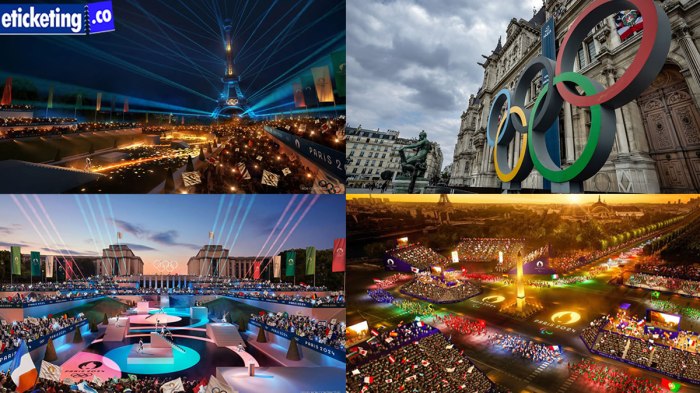
Exploring Olympic venues provides a unique and enriching experience. These places, imbued with history and sporting significance, offer a glimpse into the past while inspiring us for the future. Whether you’re a sports enthusiast, an architecture buff, or simply seeking a memorable travel experience, visiting these venues is sure to leave a lasting impression. We hope this guide has provided you with the knowledge and inspiration to plan your own unforgettable Olympic adventure.
